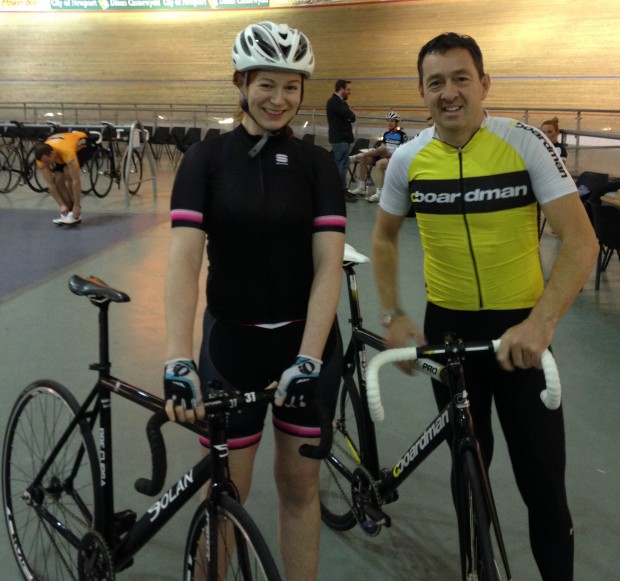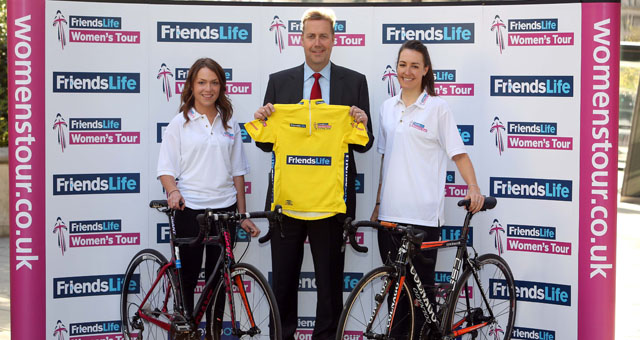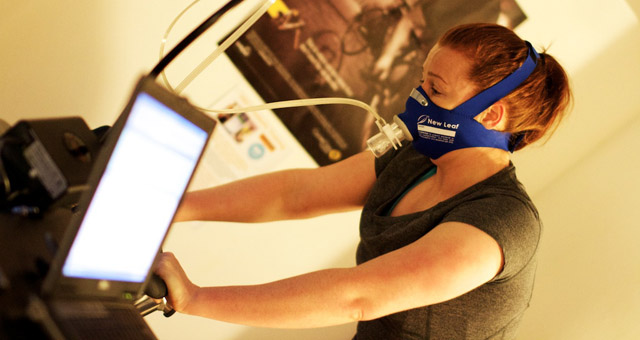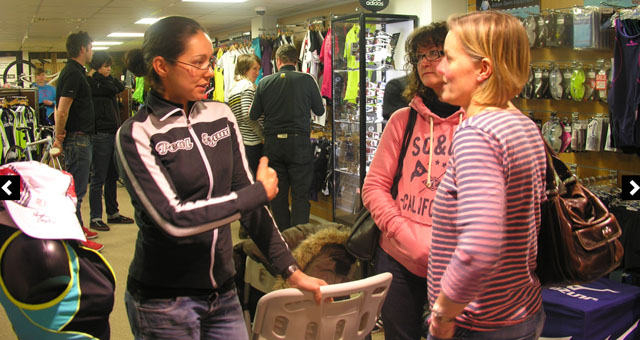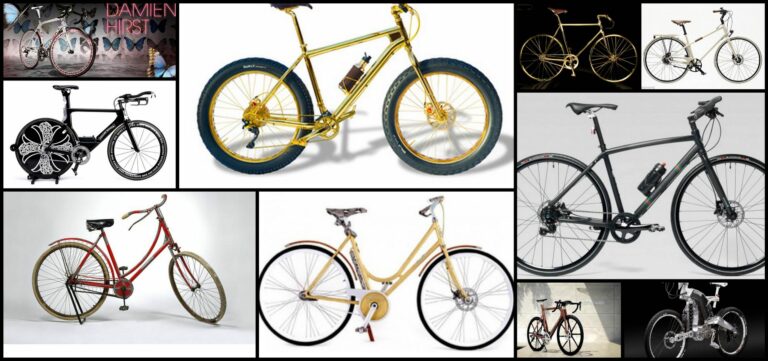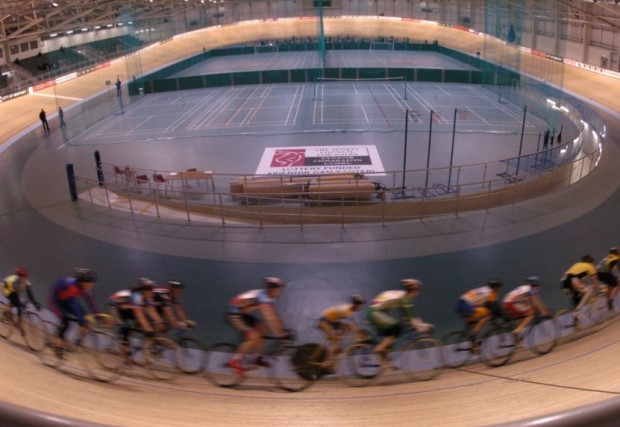
‘Bloody hell, that’s steep’.
These were the first words I uttered after walking up the steps and into the centre of the Wales National Velodrome in Newport.
This was to be my first attempt at track cycling. My only encounter with it previously was watching it on the telly for the 2012 Olympics, and I’d never set foot in a Velodrome before. The cambered ends looked way steeper in real life. I was feeling pretty nervous, and more than a little queasy.
I was there to pit my extensive (read non-existent) track cycling skills against those of other cycling journalists as part of an event organised by Halfords to launch the shiny new Boardman track bike. Much to my relief there was a mixed bag of abilities present. Total track virgins such as myself, through to World Masters Champion track cyclists like Jan Birkmyre. And Chris Boardman himself!
The plan for the afternoon was as follows –get bikes, learn to ride bikes, race bikes. Going from track virgin to attempting a race in 3 hours seemed pretty optimistic, but I was willing to give it a go.
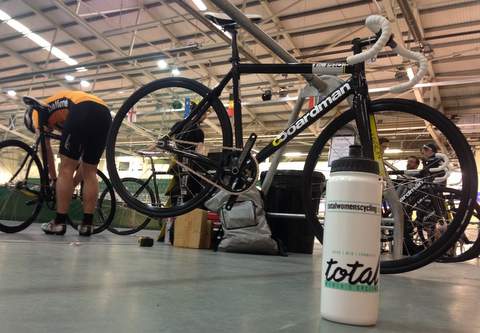
The track bikes were standing by, and they looked and felt light, strong and stealthy. They were also the source of a large portion of my fear.
Number one, they had no brakes.
Linking closely to this was number two; track bikes are fixed gear. There’s no freewheel.
This means when the wheels are turning, your legs have to turn. In order to decrease your speed you need to resist the forward push of your wheels as they drive the pedals. If you don’t keep moving your legs, the pedals can buck you forward. I’d never ridden a fixie before.
Number three; everyone was clipping into the bikes. I don’t have road shoes, and I was pretty sure that my lumpy, spiky MTB shoes wouldn’t go down a whole bundle with the owners of the lovely smooth track. Instead, my trainer clad feet were to be tightly strapped into the pedals with toe clips.
And finally number four. Despite a good general knowledge of the laws of physics, a large part of my brain wasn’t convinced I was going to be able to get enough speed up to stick myself and a bicycle to the cliff-like wall of the track.
We lined up along a railing at the side of the track, and I was duly strapped onto my steed. My head was buzzing a little during the briefing, so I somehow missed the detail, but the main things that stuck in my head were how to slow down and for gods sake don’t forget to keep pedalling even when you’ve finished your race distance.
Skill 1 – Setting off
The plan was to push gently off from the railing to give enough momentum to get pedalling. I had a few false starts, where I refused to let go of the railing, but once free and pedalling, it was fine. Much like riding a bike, you won’t be surprised to hear.
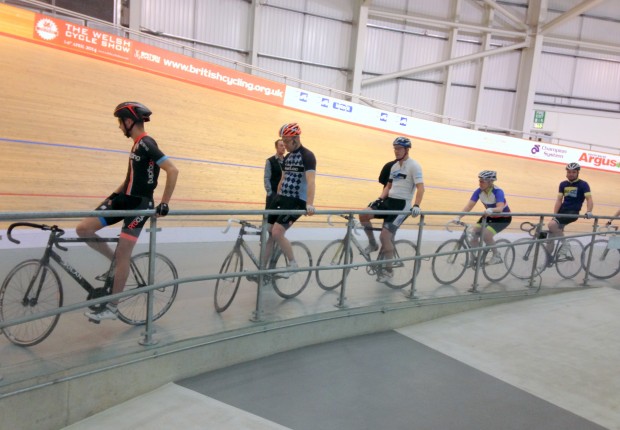
Skill 2 – Stopping
This is the one I was most interested in learning; how to stop without crashing. We’d been explicitly told not to grab onto the railing without having slowed to a stop first, and I planned to follow those instructions to the letter.
We did a few laps to practice speeding up and slowing down, and I found it wasn’t too bad. It took me a while to get my head around pushing back with my heel as the pedal pushed up. Once I’d successfully glided to a smooth and graceful stop by the railings the first time, I was feeling more than a little relieved, and pretty confident I could do it again.
Skill 3 – Riding the track
I’d noticed various different coloured patches and bands around the track, and it was at this point I found out what they were for.
The lower light blue section, right at the bottom, was pleasingly called the Cote D’Azur. Technically this isn’t part of the track, but it’s made of the same material and is slightly cambered, so it was a good place to get a feel for riding on it. This bit went quite well.
Next up was the black line, located 20cm into the track. This is where you begin to feel the camber properly when you go round each end. Essentially, once you can ride this line you should be able to ride further up, as the gradient is the same. Again, so far so good.
Further up again is the red line AKA the sprinters line. Between the black and the red line is apparently the optimal place to ride, as it’s the shortest distance around the track. Although it’s only 90cm inside the track, it feels a hell of a lot higher when you’re going round the bends.
My main fear here was not having enough speed to give me traction in these corners; you have to speed up to keep you stuck in. As it happened, once I’d given it a bit of welly (and got over my fear of going fast) this too felt okay. In fact, after a couple of laps I suddenly found myself at the blue line, 2.5m up the track. A sudden jangle of nerves was soothed by the voice of Jan Birkmyre, passing by somewhere over my head, saying that I was doing quite well.
I tried to focus on her voice, rather than the fact her front wheel was whizzing past my right ear.
And suddenly and surprisingly, I actually found myself really enjoying it. I was riding track! I wasn’t falling off, and I was going, I thought, pretty fast.
Before I knew it, it was race time. We were matched two by two, setting off at the same time but on different sides of the track, to ride two times the 250m circuit. I now understand why track cyclists have such impressive thighs, because even just giving it my all for 500m of sprinting left me with the shakes, but buzzing from top to toe. Hell, it was fun!
I suspect I’ll be doing this again.
Like this article?
Why not find out about some of the most inspirational female cyclists of all time?
